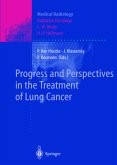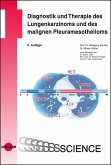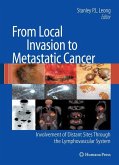Defining the Lung Cancer Problem 1 Lung cancer is the leading cause of cancer death in the world. It kills almost as many Americans as cancers of the breast, prostate, colon, rectum, pancreas, and 2 kidney combined, and accounts for 28.6% of all US cancer deaths. With an increase in the 5-year relative survival rate from 13% to only 16% in the more than 2 30 years from 1974 to the present, it will take us another 840 years to eradicate lung cancer deaths if we do not improve the current rate of progress. As discussed in this text, lung cancer prevention has received substantial att- tion. The decrease in smoking in recent decades has helped, but smoking is not the only problem. Lung cancer in people who have never smoked is currently the 5th 3 leading cause of cancer death in the United States. Several factors contribute to the lethality of lung cancer, including the rapidity of tumor growth, advanced stage at diagnosis (due to nonspecificity of early sy- toms and the uncertain efficacy of screening), early development of metastases, and resistance to therapy. Several chapters in this book discuss new molecular targets that may be potentially exploitable in the future, as well as discussing our track record to date in exploiting them.
From the reviews:
"This comprehensive review of prevention and treatment strategies for malignancies of the thorax thoroughly investigates tumor biology and discusses established and emerging therapies. ... The book is written for a wide audience that includes pathologists, pulmonologists, medical oncologists, radiation oncologists, and surgical oncologists. ... I would highly recommend this book to anyone interested in current and future therapies for lung cancer. This is one of the most comprehensive and up-to-date accounts of the field." (Nagendra S. Koneru, Doody's Review Service, July, 2010)
"This comprehensive review of prevention and treatment strategies for malignancies of the thorax thoroughly investigates tumor biology and discusses established and emerging therapies. ... The book is written for a wide audience that includes pathologists, pulmonologists, medical oncologists, radiation oncologists, and surgical oncologists. ... I would highly recommend this book to anyone interested in current and future therapies for lung cancer. This is one of the most comprehensive and up-to-date accounts of the field." (Nagendra S. Koneru, Doody's Review Service, July, 2010)









